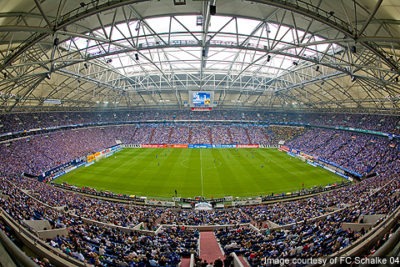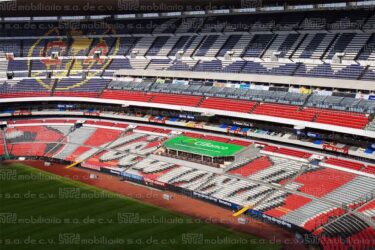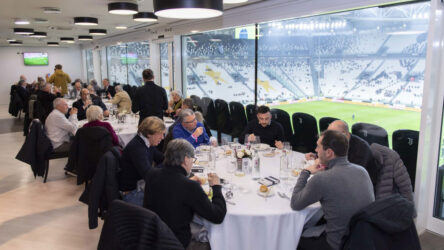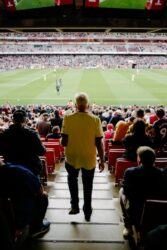Great foresight is needed to properly address the needs of spectators today and for years to come. Standards of comfort continue to evolve. A quick look back underscores how much more comfort all ticket holders enjoy compared to a couple of decades ago. Everyone, from those with the lowest cost tickets to the VIPs, enjoy better seating than they once did. Undoubtedly, 10 or 20 years from now, standards will have further evolved. It is therefore important for stadium seating decisions to be made accordingly. Stadium design must be forward-looking. It is reasonable to assert that a modern venue should offer seats that meet certain standards.
Protection From the Elements
Oftentimes, today’s facilities already offer retractable roofs in less hospitable climates. Even in places with relatively constant sunshine, a roof or partial roof offers shade to ticketholders for at least a part of the sports contest.
Given the fact that sports fans now enjoy high levels of comfort at home, at work and in their vehicles, it is only natural to assume that these prospective spectators will be less and less likely to tolerate extreme heat and humidity on one hand or sub-freezing conditions on the other. Proposed venues may need to face the reality of rising customer expectations. Everything points to an increased use of retractable roofs in the future. These enclosures allow open-air viewing of the event when weather conditions permit. The success of existing retractable roofs points to the advisability of such a solution. An owner or municipality communicates that spectator comfort is a priority when a retractable roof is employed in stadium design.
Of course, any kind of roof that limits sunlight and ventilation in any way will make turf quite difficult to maintain. At the Gelredome Stadium in Arnhem in the Netherlands, an innovative solution is already being employed. The entire grass surface upon which games are played slides out of the venue where it can be exposed to the natural elements. The sunlight that the grass absorbs fully solves the challenge. The same concept is used at another venue in Gelsenkirchen, Germany. This solution is effective but quite costly.
Seating Specifications
Standing-room-only tickets are still sold at a number of soccer stadiums across the globe. In an era of rising expectations, every spectator should be seated in newly designed venues. Furthermore, individual stadium chairs, rather than benches or bleachers, should be installed. Such stadium seats should be attached to the main structure, and they should ideally be ergonomically designed.
Backrests
Such seating can address lower back and other issues. Furthermore, backrests should be of adequate height to offer mid-back support as well. This standard would prohibit the use of so-called “tractor-style” seats commonly found on older farm tractors. Such seats only offer a small flange-like structure that does not offer any back support at all.
The use of proper backrests addresses an important need in many venues to prevent “surging,” the practice of spectators pushing forward amidst their exuberant celebrations after soccer goals are scored, for example. Importantly, the organizers of the FIFA World Cup required that these standards be applied in all stadiums that will host soccer games during the World Cup.
Seat Width
Seats must be of sufficient width to ensure fan comfort. It is always tempting to maximize capacity through the use of narrow stadium chairs, but uncomfortable seats can actually reduce attendance in the long-term. Once certain spectators are alienated by narrow seats, they may never return. Seat widths of at least 47cm are recommended, although an absolute minimum of 45cm is important to honor. Such seat widths account for bulky clothing that some may wear.
Leg Room
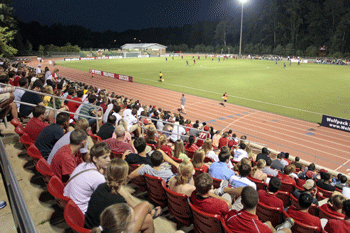
Rows of seats should be far enough apart that the knees of spectators do not press up against the row in front. Proper space between rows will ensure that ticket holders can arrive and depart in an expeditious manner, even when others remain in their seats. Adequate space is vital in the event of emergency evacuations as well. A distance of 85cm from backrest-to-backrest is recommended. Retractable seat backs greatly contribute to addressing the need for proper space between rows.
Sight Lines
Fans should enjoy a direct sight line of the entire field over the head of any spectator seated two rows in front. Allowances should be made for the potential placement of advertising boards around portions of the field as well. This is more of an issue at soccer venues.
Seat ID
The route to the section and the row of a given seat must be clearly identifiable. Seat ID systems should allow stadium seating numbering to be easily recognized. Spectators should not have to stoop over to see numbers. Stadium seats should not have small or faded numbers. Such deficiencies slow down the entire entry process for fans in general.
Finally, stadium seating should be fireproof, unbreakable and colorfast, even in harsh climates. To meet these standards, great care should go into proper seat selection.



